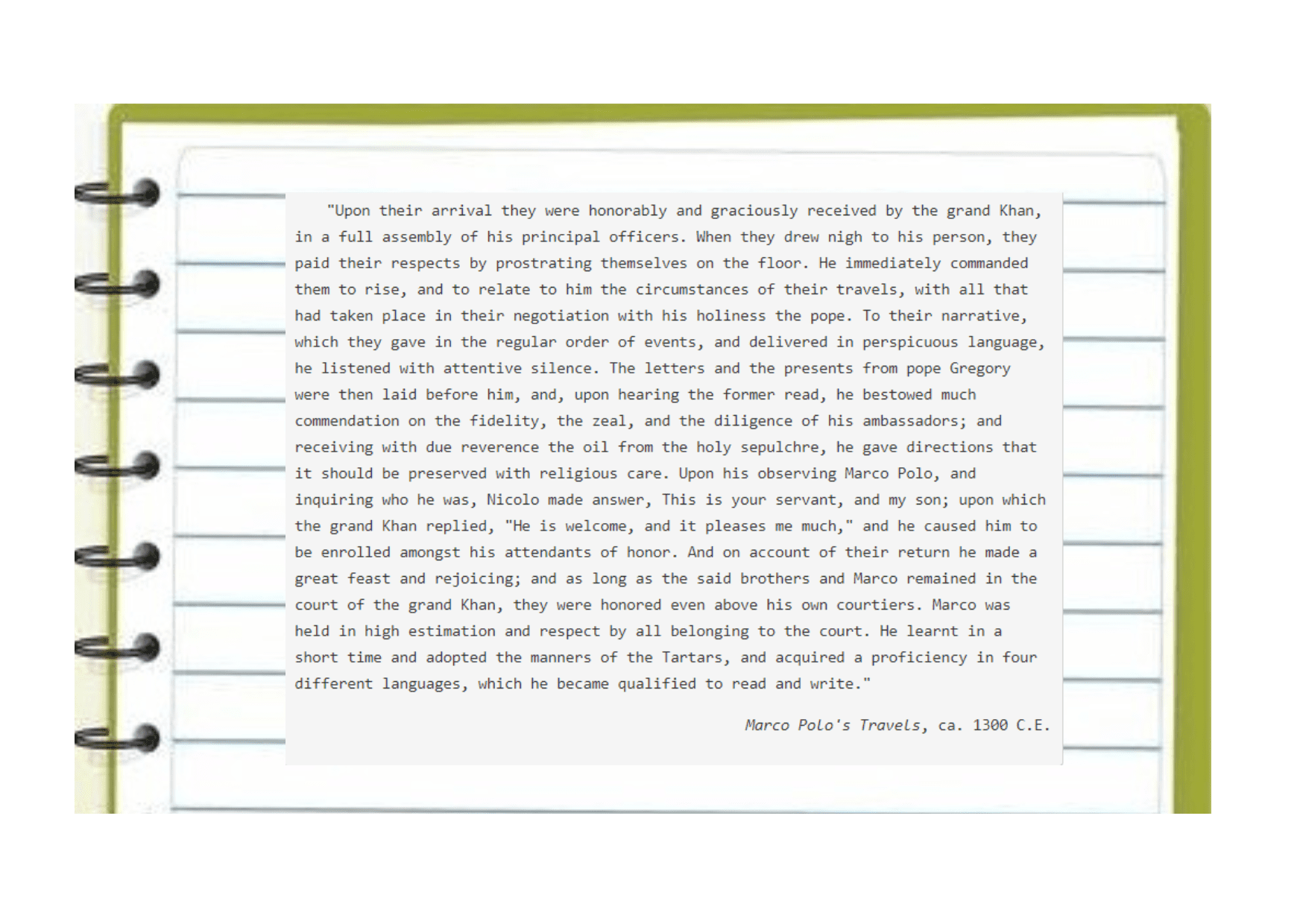
Explanation:
The story of Marco Polo's journey from Venice to China, which may or may not be entirely true, depicts the European viewpoint of a man meeting a Mongol monarch and being welcomed at that ruler's court. The text mentions the sharing of ideas and languages.
Explanation:
One of the distinctive features of the Mongols was that, in contrast to other significant civilizations of the ancient and medieval periods, they conquered huge lands inhabited by a variety of peoples without leaving behind any trace of their own culture. After the initial invasion, the Mongols typically left people alone to continue their traditional cultural and religious customs.
Explanation:
The sculpture in the image is a Roman reproduction of a Greek original. Greco-Roman art is distinguished by a great reliance on marble and naturalistic human representations.
Explanation:
Artists created lifelike human sculptures during both the classical and Hellenistic eras of Greek history. These sculptures, which were often commissioned by wealthy people who utilized the sculptures and other artwork to decorate their houses and gardens, frequently featured common people, whether men, women, or children.
Explanation:
Throughout the middle centuries, it was the Islamic traders who had the drive and desert survival abilities to cross the perilous Sahara Desert and arrive in the kingdoms of Songhai and Mali.
Explanation:
The Arabic language was carried to the east coast of Africa by Muslim traders from the Middle East and southern Asia. In reality, Swahili is a combination of Arabic and classical Bantu languages from Africa.
Explanation:
Traveling through central Africa was (and still is) challenging because the majority of the region is covered in jungle and mountains. Outsiders did not begin to travel through central Africa through the big river systems until the contemporary age.